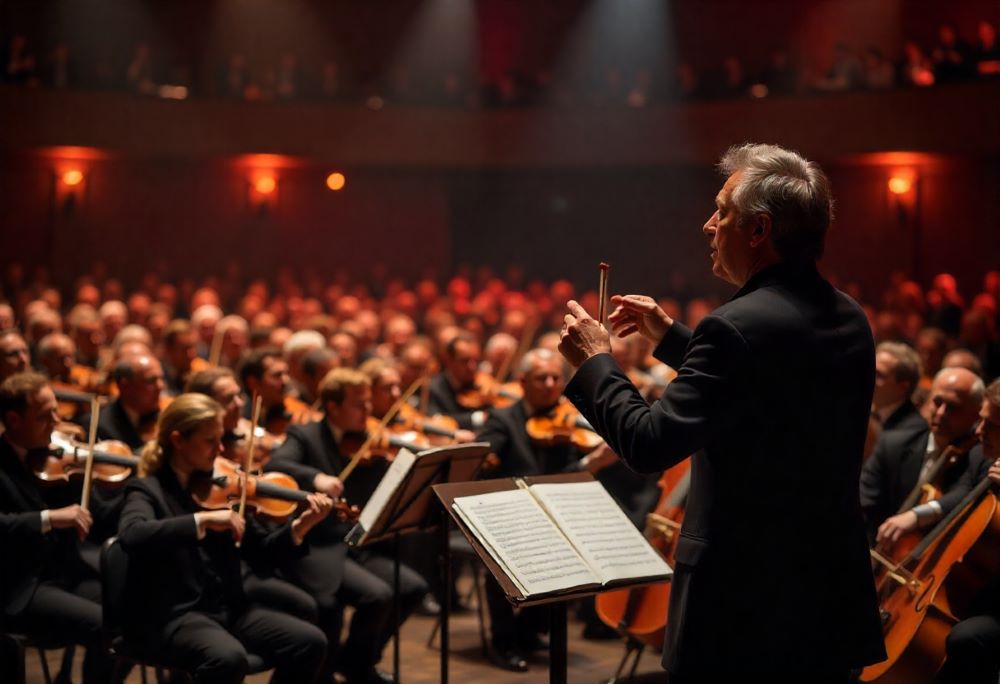Published on
September 20, 2025
The George Enescu International Festival, Romania’s flagship cultural fixture, keeps ascending in international regard year after year. Once anchored in the capital, Bucharest, the festival now vibrantly celebrates the country’s centuries-old musical inheritance, luring an ever-burgeoning audience. Even with persistent state-spending constraints, the festival has defied the odds, recording rising visitor numbers and confirming its role as a powerhouse in Romania’s tourism landscape—proof that artistic magnetism still thrives, even in leaner decades.
Enescu Festival 2025: Bigger and Better Than Ever
The 2025 Enescu Festival, which runs from late August to September, promises to be an exceptional cultural event, bringing together a stellar lineup of international performers, orchestras, and conductors. This year’s edition features prominent names in classical music, including Martha Argerich, Anne-Sophie Mutter, and Renaud Capuçon, along with esteemed orchestras such as the Royal Concertgebouw Orchestra and the National Academy of Santa Cecilia Orchestra.
In addition to the classical staples, the festival will showcase works by Eastern European composers and contemporary pieces, further emphasizing Romania’s growing influence in global classical music. The unique blend of timeless compositions and modern artistry is set to captivate music lovers from all over the world.
A Global Cultural Event Fueling Romania’s Tourism Growth
Romania’s tourism industry has witnessed a significant boost thanks to the Enescu Festival’s expanding international audience. Every year, tourists from around the world visit Romania to experience this world-class cultural event. The festival not only attracts classical music fans but also those keen to explore Romania’s heritage and vibrant capital city, Bucharest.
The influx of tourists benefits the local economy through increased hotel bookings, restaurant visits, and tourism-related spending. Beyond Bucharest, other festival venues across the country attract visitors, encouraging them to discover Romania’s rich cultural offerings, from the Carpathian Mountains to historical castles and medieval towns.
Romania’s Commitment to Culture Despite Financial Challenges
Despite Romania’s ongoing budget cuts and financial constraints, the government has remained steadfast in its support of the Enescu Festival. The Romanian Ministry of Culture continues to provide substantial funding, covering over 90% of the festival’s budget. This investment underscores the festival’s significance as both a cultural and economic asset.
The government understands that events like the Enescu Festival not only foster cultural development but also stimulate local economies by attracting international tourists. The Ministry’s support reflects its commitment to sustaining and enhancing Romania’s cultural stature on the global stage, even in the face of financial adversity.
Expanding Venues and Audience Reach
One of the key factors behind the festival’s increasing success is its ability to reach a broader audience. In recent years, the festival has expanded its programming to include performances in alternative venues, such as contemporary art museums and trendy spaces like Club Control in Bucharest. This shift has attracted younger, more diverse audiences, helping the festival connect with millennials and Generation Z music lovers.
By incorporating immersive and innovative performance spaces, the Enescu Festival is breaking the mold of traditional classical music events, attracting a more eclectic crowd. The festival’s programming, which now includes works by modern composers, ensures its appeal to a broader demographic, including those who may not typically attend classical music festivals. These changes have further enhanced Romania’s appeal as a cultural tourism destination, broadening its international reach.
The Enescu Festival’s Lasting Impact on Romania’s Economy and Tourism
The economic impact of the Enescu Festival on Romania’s tourism sector cannot be overstated. The event draws thousands of international visitors each year, who not only enjoy the performances but also contribute to the local economy by spending on travel, accommodation, and dining. Visitors often extend their stays to explore Romania’s historical and natural wonders, making the festival a gateway for discovering the country’s vast cultural landscape.
The festival’s influence extends beyond just the capital. Cities and regions hosting festival performances benefit from increased tourist traffic, promoting local tourism and providing businesses with opportunities to cater to the influx of visitors. This ripple effect on local economies highlights the festival’s role as a powerful driver of regional tourism development.
Looking to the Future: Enescu Festival as a Staple of Romania’s Cultural Tourism
Looking ahead to 2025, the George Enescu Festival is set to continue as a major role in promoting Romania as destination for cultural tourism. The festival’s growing international recognition, mixed with its ability to draw large crowds from across the globe, makes it as essential event in Romania’s tourism calendar. As the country seeks to diversify its tourism offerings, the Enescu Festival remains a key part of its strategy to enhance its global cultural footprint.
With the combination of international artists, diverse events, and a strong commitment to cultural funding, the George Enescu Festival will undoubtedly continue to captivate music lovers and tourists in future. As Romania continues to grow on the global cultural stage, the Enescu Festival will remain at the forefront of its efforts to build a robust and sustainable tourism sector.
